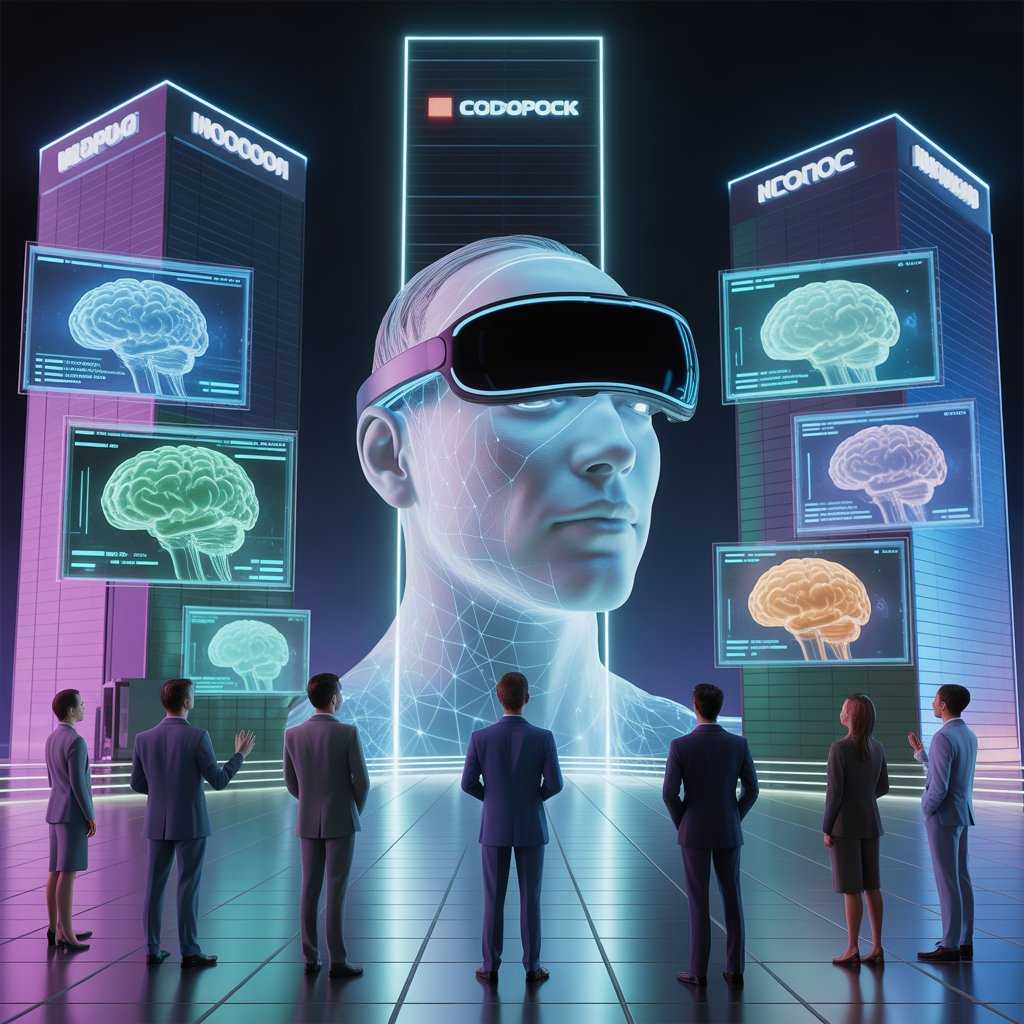Tech Giants Envision a Future Beyond Smartphones, has been the undisputed center of our digital lives. It’s how we communicate, navigate, shop, and entertain ourselves. But technology never stands still, and the world’s most powerful tech companies are already looking past the pocket-sized screens that define our era.
Apple, Google, Meta, Samsung, and others are investing billions into technologies that could make smartphones obsolete. They’re building immersive AR experiences, AI-driven assistants that anticipate our needs, and wearable devices that integrate seamlessly into our bodies and environments. The post-smartphone era isn’t a distant dream it’s actively being engineered right now.
This shift raises profound questions. What will replace the smartphone? How will we interact with technology when screens disappear? And most importantly, are we ready for a world where digital intelligence surrounds us at all times?
Why Are Tech Giants Envision a Future Beyond Smartphones?
The Innovation Plateau
Smartphone sales have plateaued globally. After years of incremental upgrades—slightly better cameras, marginally faster processors—consumers are holding onto their devices longer. The iPhone 15 isn’t radically different from the iPhone 13, and buyers know it.
This stagnation has forced companies to look elsewhere for growth. They need breakthrough innovations that can create entirely new markets, not just refresh existing ones.
The Limitations of Screen-Based Interaction
Smartphones are powerful, but they’re also limiting. Every interaction requires pulling out a device, unlocking it, opening an app, and tapping through menus. This creates friction between users and information.
Tech companies envision a future where digital interactions are instantaneous and invisible. Instead of checking your phone for directions, smart glasses overlay them onto your field of vision. Rather than typing a question into Google, an AI assistant already knows what you need before you ask.
The Rise of Ambient Computing
We’re entering an age of ambient computing, where technology fades into the background of our lives. Devices communicate with each other automatically. Your car knows your calendar and adjusts your departure time. Your home adjusts lighting based on your mood, detected through biometric sensors.
This requires moving beyond a single device model toward interconnected ecosystems—something smartphones, by their nature, can’t fully deliver.
The Emerging Technologies Defining the Post-Smartphone Future
Artificial Intelligence Everywhere
AI is no longer just a feature; it’s becoming the foundation of how we interact with technology. Modern AI assistants are evolving from simple voice responders into intelligent agents that understand context, emotion, and intent.
Google’s Gemini and Apple’s advanced Siri implementations can now hold nuanced conversations, remember past interactions, and proactively suggest actions. They’re learning to predict what you need—whether that’s reminding you to leave early for an appointment because of traffic, or suggesting a recipe based on ingredients in your fridge.
The next-generation technology goes further. AI will mediate almost every digital interaction, translating your intentions into actions across multiple devices without manual input. You won’t open apps; AI will execute tasks on your behalf.
Augmented and Virtual Reality
Apple’s Vision Pro represents a bold bet on spatial computing—a blend of AR and VR that overlays digital content onto the physical world. Instead of staring down at a smartphone, you look through transparent displays that augment what you see.
Meta Quest and similar platforms are building immersive virtual environments where people work, play, and socialize. Meta envisions a metaverse where virtual presence feels as natural as physical presence.
While early adoption has been slow, the technology is improving rapidly. Lighter headsets, better battery life, and more compelling use cases are making AR and VR increasingly practical for everyday tasks beyond gaming.
The Internet of Things and Smart Ecosystems
Your smartphone is just one node in a growing network of connected devices. Smart homes adjust temperature and lighting automatically. Wearable health trackers monitor your vitals continuously. Connected cars navigate, entertain, and diagnose problems without human intervention.
These devices increasingly communicate with each other, creating an “invisible internet” that operates autonomously. Your smartwatch detects you’re running late and signals your car to warm up. Your fitness tracker notices elevated stress levels and dims your home lighting to help you relax.
This interconnected ecosystem represents the infrastructure of a post-smartphone world—one where multiple specialized devices replace the smartphone’s jack-of-all-trades approach.
Wearable and Implantable Technology
Smart glasses are becoming more sophisticated. Ray-Ban Meta smart glasses let users take photos, listen to music, and interact with AI—all without pulling out a phone. Apple is reportedly developing similar products.
Some companies are exploring even more radical ideas. Neural interface companies like Neuralink are developing brain-computer interfaces that could allow direct mental control of digital systems. While still experimental, these technologies hint at a future where the boundary between human and machine blurs completely.
Who Leads the Future Race? The Vision of Global Tech Titans
Apple: Betting on Spatial Computing
Apple’s Vision Pro signals a major strategic shift. Tim Cook has called spatial computing “the next big thing,” and Apple is positioning the device as a successor to both smartphones and computers.
The Vision Pro isn’t just a VR headset it’s designed to overlay digital information onto your physical environment seamlessly. You can work on virtual displays floating in your living room, FaceTime with realistic avatars of friends, or watch movies on a screen that fills your entire field of vision.
Apple’s approach emphasizes polish and integration. The device works seamlessly with iPhones, iPads, and Macs, creating an ecosystem that extends beyond any single device. If successful, it could redefine how we think about personal computing.
Google: Building the AI-First World
Google has pivoted hard toward artificial intelligence. Its Gemini AI powers everything from search to email to photo organization. The company envisions a future where users rarely interact directly with devices—AI handles the heavy lifting.
Google Assistant is evolving into an ambient presence that understands context across all your devices. It knows your schedule, preferences, and habits, proactively offering suggestions and automating routine tasks.
Google’s strength lies in data and machine learning. By analyzing billions of interactions, it can create AI systems that feel genuinely intelligent and helpful. The challenge is balancing this capability with privacy concerns.
Meta: Reimagining Social Connection in the Metaverse
Mark Zuckerberg has bet Meta’s future on virtual and augmented reality. The company has invested tens of billions into building the metaverse a persistent virtual world where people gather, work, and play.
Meta Quest headsets are becoming increasingly capable and affordable. The company envisions a future where virtual meetings feel more natural than video calls, where you can attend concerts and events from home, and where digital goods hold as much value as physical ones.
However, Meta faces significant challenges. Building compelling virtual experiences is difficult, and convincing people to wear headsets regularly is even harder. The metaverse remains more promise than reality.
Samsung and Huawei: Hardware Innovation Meets Integrated Ecosystems
Samsung continues pushing hardware boundaries with foldable phones, advanced wearables, and smart home devices. The company’s Galaxy ecosystem connects phones, watches, earbuds, and home appliances into a cohesive whole.
Huawei, despite geopolitical challenges, is developing sophisticated wearables and IoT devices for the Chinese market. Both companies recognize that future success depends on creating seamless experiences across multiple devices rather than relying on smartphones alone.
How Will Life Look Beyond Smartphones?
AR Interfaces Replace Touchscreens
Imagine walking down a street and seeing directions, restaurant reviews, and friend recommendations floating in your field of vision. No phone required just lightweight glasses that overlay information onto the world around you.
Gestural interfaces could replace tapping and swiping. Instead of typing on a keyboard, you might trace letters in the air or simply think commands that neural interfaces translate into actions.
This shift would fundamentally change how we navigate information. Rather than pulling us away from the physical world into digital screens, technology would blend seamlessly with reality.
AI Becomes Our Primary Interface
Voice and text could give way to more intuitive interaction. AI assistants might read your biometric signals—heart rate, stress levels, eye movements—to understand your emotional state and respond appropriately.
These systems would learn from every interaction, becoming increasingly personalized over time. Your AI might know you prefer visual information in the morning but audio updates while driving. It could schedule meetings during your peak productivity hours and suggest breaks when you’re fatigued.
The ethical implications are significant. How much should AI systems know about us? Who controls this data? These questions will shape how the post-smartphone era unfolds.
The End of App Overload
Today’s smartphones are cluttered with dozens or hundreds of apps. The post-smartphone era might eliminate apps entirely in favor of AI-driven micro-interactions.
Instead of opening a weather app, you’d simply ask or glance at your glasses. Rather than launching a music app, your wearable would play songs based on your mood and activity. Single-purpose apps would give way to universal AI platforms that understand intent and execute tasks automatically.
This could streamline digital life dramatically, but it also concentrates enormous power in the hands of a few AI providers.
Challenges Tech Giants Must Overcome
Privacy and Data Control
Next-generation technology requires collecting massive amounts of personal data—everything from biometric information to real-time location and behavioral patterns. This creates unprecedented privacy risks.
Users need meaningful control over their data. They should understand what’s being collected, how it’s used, and who has access. Regulatory frameworks like GDPR provide some protection, but enforcement remains inconsistent.
The companies that earn user trust will have a significant competitive advantage as we move beyond smartphones.
Infrastructure Limitations
AR glasses, AI assistants, and IoT ecosystems require robust, always-on connectivity. However, many parts of the world still lack reliable high-speed internet.
Energy consumption is another concern. Data centers powering AI systems consume enormous amounts of electricity. Wearable devices need longer battery life to be practical for all-day use.
Overcoming these infrastructure challenges is essential for the post-smartphone vision to become reality globally, not just in wealthy urban centers.
Consumer Trust and Adoption
People are comfortable with Tech Giants Envision a Future Beyond Smartphones. Convincing them to adopt fundamentally new interaction models is difficult.
Early AR headsets have been expensive, bulky, and socially awkward to wear in public. Smart glasses face similar adoption barriers—many people don’t want to advertise that they’re recording their surroundings.
Tech companies must create devices that are not only technically impressive but also socially acceptable and genuinely useful for everyday tasks. That’s a high bar to clear.
The Road Ahead: When Will Smartphones Truly Disappear?
Predicting the Timeline
Most experts predict smartphones will remain dominant for at least another decade. The technologies replacing them—advanced AR, ubiquitous AI, seamless IoT—are still maturing.
By 2030, we might see widespread adoption of smart glasses and AI assistants that handle many tasks currently requiring phones. By 2040, smartphones could become niche devices rather than universal necessities.
However, predictions are uncertain. Breakthroughs in battery technology, AI capabilities, or interface design could accelerate this timeline dramatically.
The Transition Phase
We’re currently in a hybrid era. Phones remain central, but they’re increasingly augmented by watches, earbuds, and other wearables. This gradual transition helps users adapt to new interaction models without abandoning familiar devices.
Foldable phones, which blur the line between phones and tablets, represent another transitional technology health . They maintain familiar smartphone functionality while experimenting with new form factors.
The Ultimate Question
As technology becomes more integrated into our lives and bodies, fundamental questions emerge. Will we control these systems, or will they control us? Can we preserve human autonomy and privacy while embracing digital innovation?
The tech giants shaping this future have enormous responsibility. Their choices will determine whether the post-smartphone era enhances human flourishing or diminishes it.
The Human Side of Tech Evolution
Impact on Daily Life and Work
AI automation will eliminate many routine jobs while creating new opportunities in creative and strategic fields. Workers will need continuous learning to adapt to rapidly changing skill requirements.
Daily life will become more convenient in many ways—less time wasted on mundane tasks, more personalized experiences. However, we may also face increased digital distraction and surveillance.
Will It Deepen or Diminish Human Connection?
Proponents argue that better technology will free us to focus on meaningful relationships. If AI handles scheduling, navigation, and information retrieval, we can be more present with the people around us.
Skeptics worry that immersive virtual experiences will further isolate us from physical reality and genuine human interaction. Finding the right balance between digital innovation and human emotion will be crucial.
Beyond Smartphones—Toward a Seamless Digital Reality
Tech Giants Envision a Future Beyond Smartphones isn’t science fiction. It’s being built in research labs and corporate headquarters right now. Apple, Google, Meta, Samsung, and others are racing to define what comes next—and their vision is ambitious.
We’re moving toward a world where technology doesn’t live in our pockets but surrounds us constantly. AR glasses will overlay information onto reality. AI assistants will anticipate our needs before we articulate them. Wearable devices will monitor our health, emotions, and environment in real-time.
This digital innovation promises remarkable benefits: greater convenience, personalized experiences, and seamless integration between our digital and physical lives. But it also raises profound questions about privacy, autonomy, and what it means to be human in an age of ubiquitous artificial intelligence.
The post-smartphone era will challenge us to think carefully about the kind of future we want to build. Technology is a tool—powerful, transformative, but ultimately shaped by human choices. As we move beyond smartphones, those choices have never been more important.
The next revolution won’t fit in your pocket. It will be all around you, learning from you, adapting to you. Whether that’s liberating or unsettling depends on how thoughtfully we navigate the transition ahead.
FAQ of Tech Giants Envision a Future Beyond Smartphones
What does “Tech Giants Envision a Future Beyond Smartphones” mean?
It refers to emerging technologies like AI, AR/VR, and wearable devices that will gradually replace traditional smartphone interactions. Instead of pulling out a device to access information, technology will be integrated into glasses, watches, and even our environments, creating seamless digital experiences.
Which tech companies are leading this change?
Apple is investing heavily in spatial computing with Vision Pro. Google is building AI-first ecosystems with Gemini. Meta is developing the metaverse through VR platforms. Samsung and Huawei are advancing wearable technology and IoT integration. All are working toward a post-smartphone era.
Will smartphones disappear completely?
Not immediately. Smartphones will likely remain dominant for the next decade, but they’ll gradually transform into specialized devices within larger ecosystems. By 2030-2040, smart glasses, AI assistants, and wearables may handle most tasks we currently use phones for.
How will this affect consumers?
Users will experience faster, more intuitive interactions with technology. Information will be instantly accessible through AR displays or AI assistants that understand context. However, this convenience comes with privacy trade-offs and requires adapting to new interaction models like voice and gesture controls.
Is this future safe for privacy?
Only if companies prioritize ethical AI development and transparent data practices. Next-generation technology requires collecting extensive personal data—biometrics, location, behavior patterns. Strong regulation, user control over data, and corporate accountability are essential to protect privacy in the post-smartphone era.




